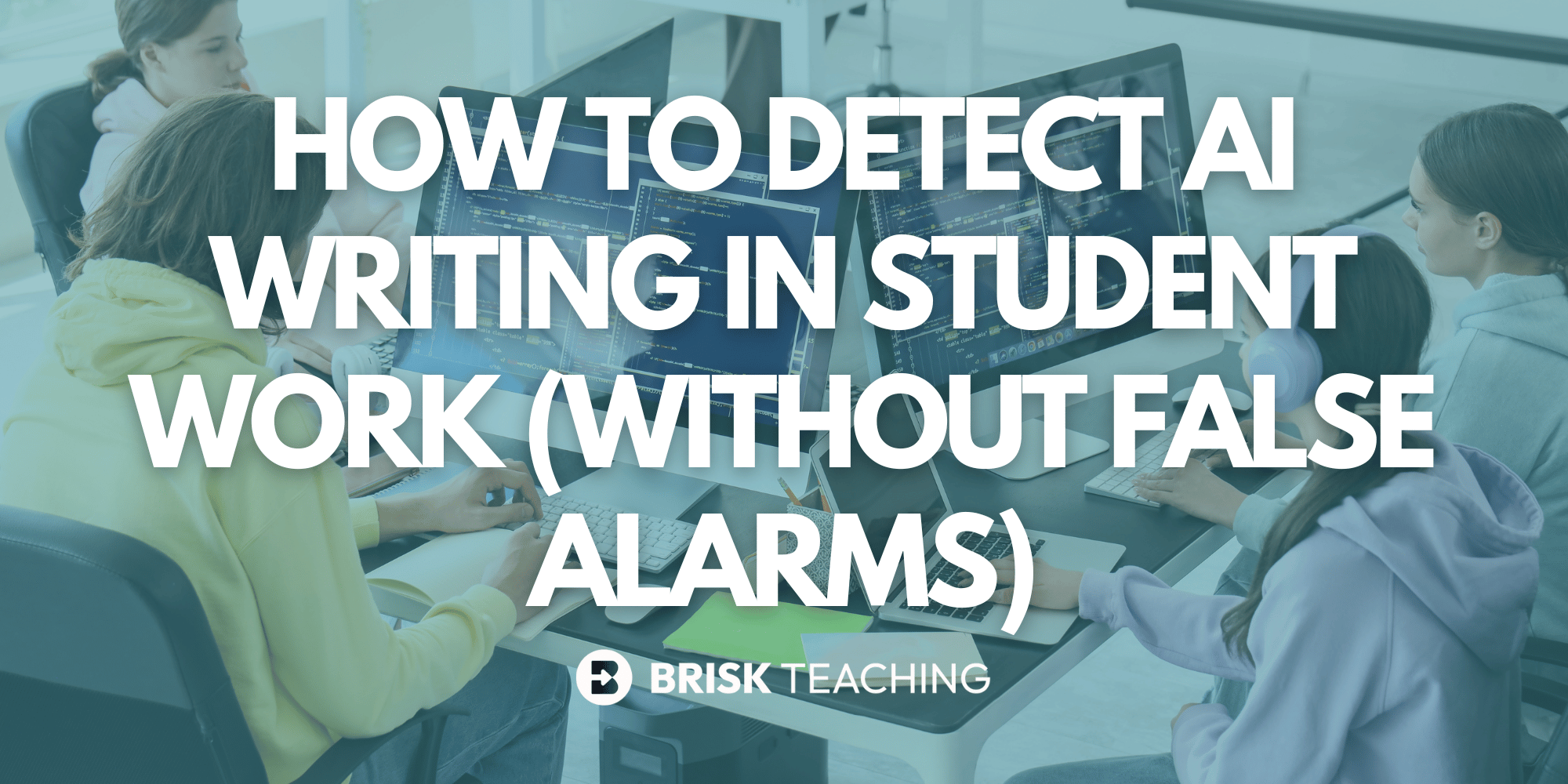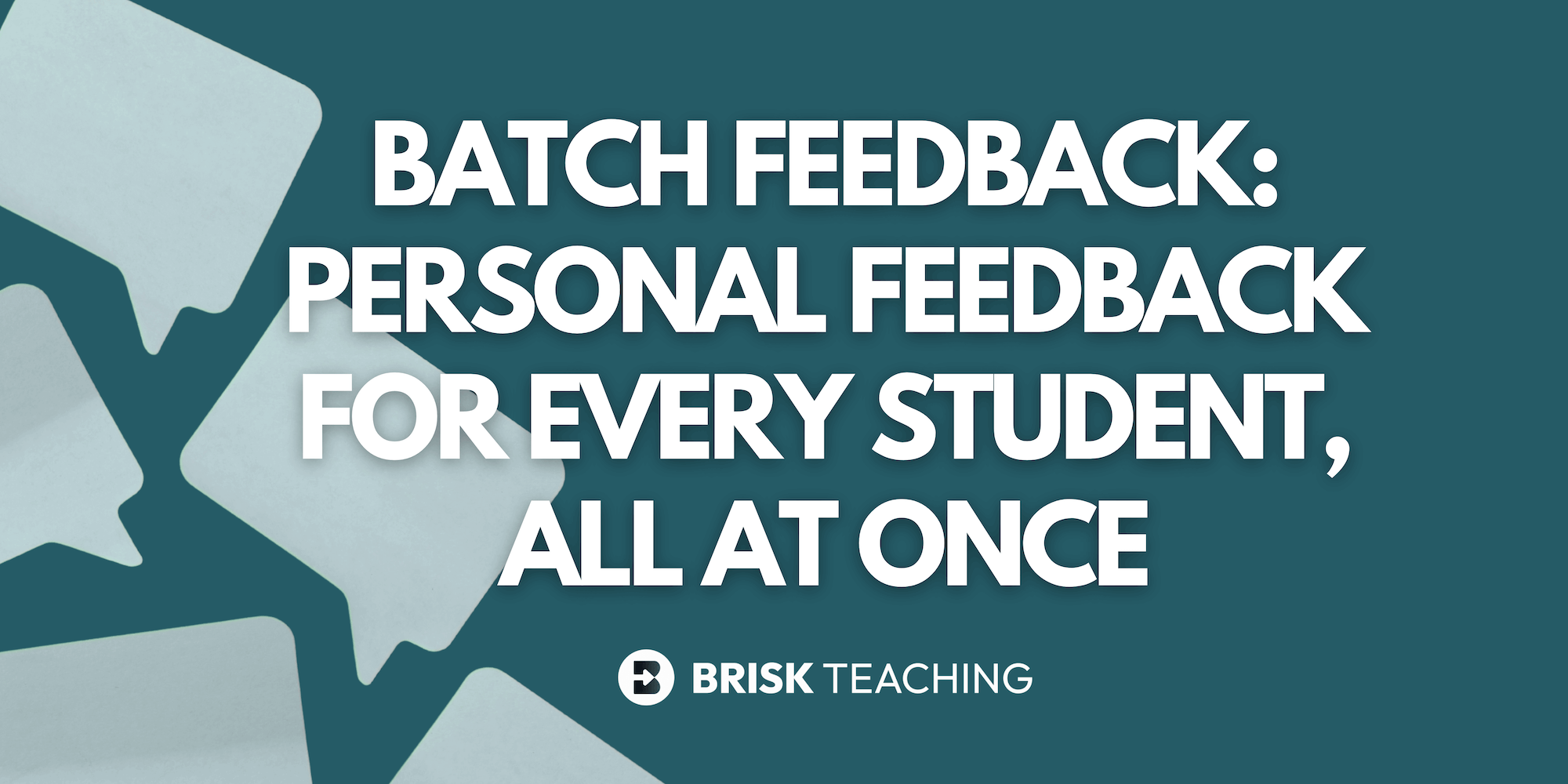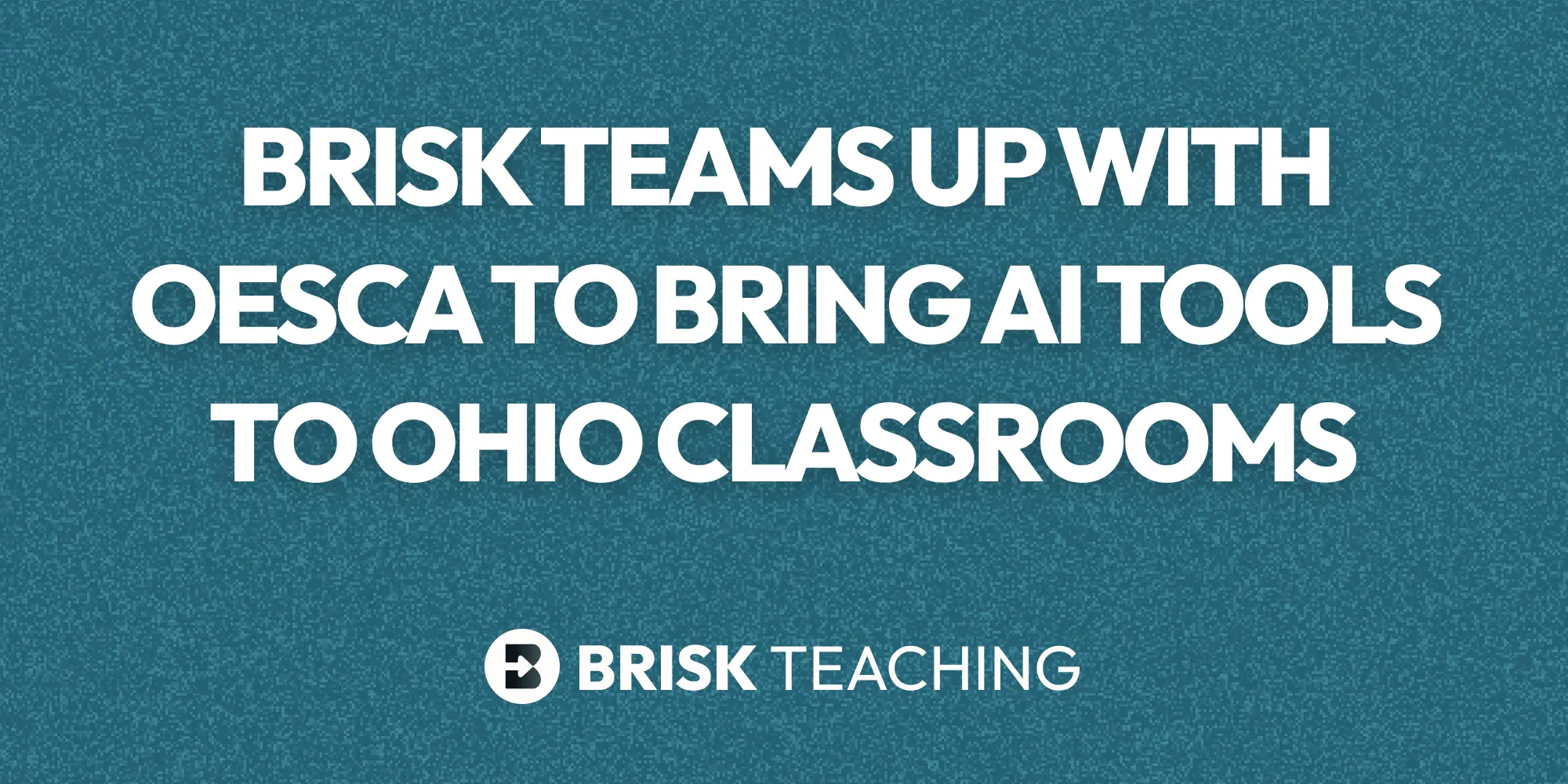Today, it’s nearly impossible to prevent students from using AI at some stage of their schoolwork — and that’s not always a bad thing. Many students use tools like ChatGPT or other AI platforms as part of their brainstorming, outlining, or drafting process. AI writing in education is here to stay, even in schools that officially restrict it.
Keep reading this guide to learn:
- Where common AI detection tools fail
- What to look out for when evaluating for AI generation
- Why understanding how a student wrote their work is just as important as what they wrote
- How Brisk can give you deeper insight into each student’s writing process
Why Traditional AI Detection Isn’t Enough
AI detection software has some benefits, but the limitations are significant enough to call its efficacy into question. Below are some of the most common problems with AI detectors that teachers face:
- High false positive rate: No matter the writing style, false positives are a major issue across all detection algorithms. Some tools have even flagged the U.S. Constitution as being written by AI!
- Challenges for multi-lingual writers: In English-language curricula, students who are developing English proficiency sometimes use grammar or spelling tools to refine their writing. Because these supports can make text appear more polished, AI detection software may occasionally misclassify their work as AI-generated.
- Misleading accuracy claims: Many AI-text-detection tools operate at a much lower reliability than claimed. Studies show they often score well under 80% accuracy in real-world contexts — meaning that at least 1 in 5 decisions could be wrong. That opens the risk of incorrectly flagging a student’s genuine work as AI-generated, or failing to catch actual AI-generated content.
A false accusation can damage trust between teachers and students. The teacher may believe the student is being dishonest, and the student may feel unfairly judged. That kind of mistrust can be difficult to repair.
Teachers deserve tools that do more than say yes or no. What is needed are tools that go beyond detection and provide deeper insight into student writing, so instruction can focus on growth instead of suspicion.
The Best Way to Detect AI in Student Writing
With this rise in AI-generated student work, many teachers worry about plagiarism, the loss of student voice, or inaccurate writing creeping into assignments. On the surface, learning how to detect AI writing seems like the logical next step. The reality is that AI detection tools are often flawed, producing false positives that can hurt student trust and misrepresent their abilities.
This is why a middle ground matters. With Brisk’s Inspect Writing tool, teachers take a different approach: Instead of focusing on a “gotcha” yes-or-no result, teachers gain comprehensive insight into a student’s writing process. By showing where clarity breaks down or where feedback could push learning forward, our Inspect Writing tool helps you understand how students are writing — not just whether AI was involved.
Brisk’s philosophy is not about “gotcha” results. Instead, the focus is on student learning needs above all else. That is what makes the Brisk Inspect Writing tool different from other platforms:
- Highlights areas of clarity, coherence, or voice: Teachers can see where student writing develops smoothly and where it could use support for continued growth.
- Shows growth opportunities in real time: Inspect Writing reveals how students respond to feedback by showing changes in organization, argument strength, and evidence use over time.
- Provides actionable insights instead of a verdict: Teachers can view a playback of the writing process in Google Docs to see how many revisions, edits, or copy-pastes were made.
This approach makes Inspect Writing one of the most effective AI detection tools for teachers. It saves time, reduces stress, and opens the door to meaningful conversations with students about their writing.
Snapshot of Popular AI Detection Tools
When teachers first encounter a concern about AI in student work, the natural instinct is to look for AI detection tools. Search results are full of free and paid platforms that promise to identify AI-generated text. Below are some of the most widely discussed options and their reported strengths and weaknesses:
- GPTZero: Known for its user-friendly interface and popularity among educators. However, many report a high rate of false positives despite its strong accuracy claims. GPTZero also struggles to flag writing that has been paraphrased from AI.
- Turnitin’s AI Detection: The most widely used in schools, Turnitin claims 98 percent accuracy. Teachers, however, often report inconsistencies and misclassifications, raising concerns about real-world reliability.
- Copyleaks: A popular choice in education, Copyleaks advertises very low false positives and supports multiple file formats. The trade-off is that it requires a paid subscription, and teachers still report mixed results in the classroom.
- JustDone: Claims over 90 percent accuracy but does not publish false positive rates. Marketed primarily to businesses, it offers team dashboards and combines AI detection with plagiarism checks.
- Originality.AI: Still expanding its academic focus and features. While it integrates plagiarism and AI checks, it has limited independent validation and little data on accuracy or false positives.
Common Signs of AI in Student Writing
No one knows a student’s writing style better than their teacher. Even the most advanced software cannot always pick up on the subtle cues you notice when reading your students’ work. If you are wondering how to detect AI in student writing, here are a few common signs of AI writing that may raise a red flag:
- Repetition or generic phrasing: AI-generated essays often sound predictable and may reuse the same words or sentence patterns throughout an assignment.
- Sudden shifts in writing style: A paper might suddenly feel “off.” Word choice, tone, or sentence structure could look very different compared to the student’s past work. The writing may even appear at a higher grade level than the student has demonstrated before.
- Lack of depth or personal voice: Student writing typically carries personality, preferences, and quirks. AI text, on the other hand, can feel flat or surface level, missing the nuance of a student’s unique perspective.
- Overly formal or unnatural fluency: If a student’s language suddenly becomes too polished, complex, or professional for their level, this may be another indicator that AI has been involved.
It is important to remember that these are indicators, not proof. Spotting AI-generated essays is never as simple as checking a box. Unless a student openly acknowledges their use of AI, you will rarely have absolute certainty. This is why combining professional judgment with the right tools gives the clearest picture of how students are approaching their writing.
When you suspect AI involvement in student writing, the goal isn’t punishment — it’s education. Use the moment to start a conversation about academic integrity and authorship. Encourage students to explain how they used AI tools in their process, and teach them how to properly cite or disclose that assistance. By framing AI as a writing support rather than a shortcut, you help students develop critical digital literacy: knowing when, why, and how to use technology responsibly. These conversations not only build trust but also equip students with ethical decision-making skills they’ll carry beyond the classroom.
Best Practices for Combining Human and Tool-Based Insights
When considering possible AI use, teachers need to balance software results with professional judgment. Here are some best practices for AI detection to guide your approach:
- Do not rely on any tool as the final verdict: You make the final call, not the algorithm. Always consider multiple pieces of evidence before reaching a conclusion.
- Check the writing process evidence: In Google Docs, for example, review version history to see if the student typed steadily or pasted large sections of text at once.
- Use oral reflections or in-class writing for comparison: Ask students to explain or expand on their work. If they can clearly discuss the ideas in their essay, it is unlikely AI generated it.
- Consider cultural and linguistic contexts: English language learners are more likely to be flagged incorrectly. Always account for student background before assuming AI use.
- Teach digital literacy early: AI is not inherently bad. Framing it as a thought partner helps students learn to use it responsibly rather than rely on it to do the work.
By using these strategies, teachers can move away from suspicion and toward conversations that build trust and digital responsibility.
Remember, no AI detector is perfect. Teachers’ professional judgment is the most important factor.
Brisk helps teachers navigate that gray area by providing insights into the writing process. The Inspect Writing tool allows you to see how students draft, revise, and grow as writers, giving you a clearer picture of their progress over time.
Start using Brisk today to gain deeper insight into your students’ work and save time in the process.
FAQs
Teachers often have questions when it comes to AI use in student writing. Here are some of the most common:
- Can AI detectors wrongly flag human writing? Yes. False positives happen often, especially for non-native writers. Always consider the student’s background and context before assuming AI use.
- Is there a 100% accurate AI detector? No. All tools make mistakes, and even paraphrased AI writing can slip through undetected.
- How can teachers ethically handle suspected AI use? Focus on growth rather than punishment. Look at how far the student has come since the start of the year. If you suspect AI use, have a conversation first instead of jumping to accusations.
.webp)
.webp)






